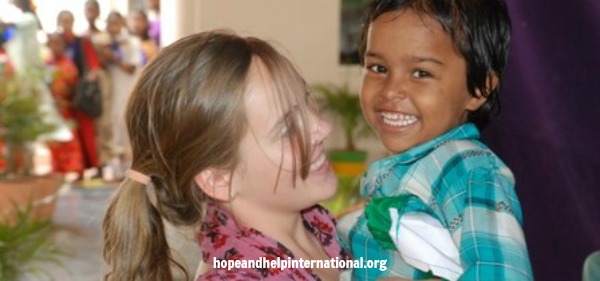
by BJ | Feb 18, 2016 | South Asia

In 2009 Stephanie came with a team to South Asia to do Kids Camp, with children from the Veda School, when she fell deeply in love with a 4 year old named Kavya.
Kavya, is a little girl with a charismatic personality despite having grown up in some very difficult circumstances. Stephanie and Kavya formed an immediate bond and Kavya began to call Stephanie, akka, which means big sister, and Stephanie’s family decided to sponsor her. They not only sponsored her but prayed for her daily as well.
The time came for Stephanie to leave and the tears flowed like a waterfall after a heavy rain. Once home, Stephanie couldn’t wait for the day she would see little Kavya again.
After a while the news came that Kavya’s father owed money to loan sharks and he had come and taken the now 6 year old away and no one knew where she was. Brokenhearted and worried Stephanie prayed for her protection and well being. The concern in the back of her mind was that she would be sold or taken into slavery or that she would be sold into the child sex slave market to pay the father’s debt to the lone shark. This was a very real fear!
She remained missing for the next two years! Akka prayed diligently for her little sister. Read more about Kavya’s story.
The Small Hands of Slavery
About 4.3 million children between the ages of 5 and 14 are believed to be working in India, although it is a huge problem in all of South Asia, according to a 2013 report by the U.S. Department of Labor. A large percentage of those children are working as bonded child labor.
While forced child labor is illegal, India allows children under the age of 14 to work.
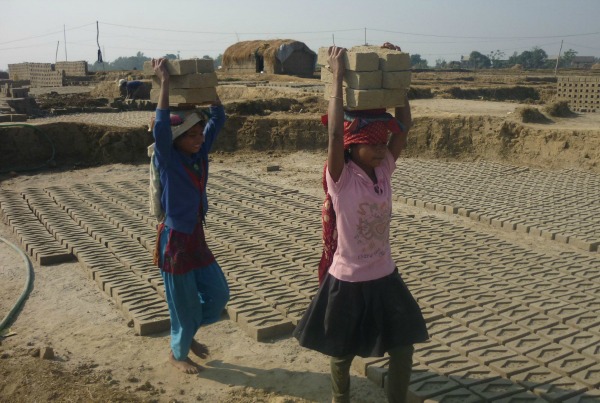
Child Labor
photo credit: wikipedia/krish dulal
What is Bonded child labor?
Bonded child labor, is a little known phenomenon in South Asia because most are found in urban areas rather than in cities. These children are working in conditions of servitude in order to pay off a debt to their employer which has been incurred not by the children themselves, but by their relatives or guardians-usually by a parent.
Bonded labor is a form of slavery. Children who are bonded with their family or inherit a debt from their parents are often found in agricultural jobs or “helping” their families in brick kilns, stone quarries. However, it is moving into other areas such as beedi-rolling (a thin India cigarette), carpet weaving, commercial sexual exploitation, construction, fireworks factories and hotels, etc. These debts tend to be relatively modest, ranging on average from 500 rupees to 7,500 rupees ($8-$120) depending on the industry and the age and skill of the child.
Pledging individual children is on the rise and usually leads to trafficking of children to urban areas for employment where they work in small production houses versus factories, which keeps them off the radar.
In South Asia, bonded laborers are mostly migrant workers, which makes them vulnerable to exploitation. Most often they come from low caste groups which also means they don’t draw attention. Unfortunately, most of the time the debt never gets paid off and the workers remain enslaved unless someone pays it in full.
Bonded child slaves are at a high risk of physical and sexual abuse and neglect sometimes leading to death. They are often psychologically and mentally disturbed and haven’t learned many social skills or survival skills.
Hope and Help International is working on in South Asia to help prevent bonded child labor by: building bridging schools, training and equipping pastors to educate those in their villages, child sponsorships, etc.
Stephanie was acutely aware of the possibility of Kavya becoming a bonded slave, so she took action to cut her risk by becoming her sponsor.
By sponsoring Kavya, she received benefits and opportunities that she would most likely never have had without Stephanie’s intervention. She will receive and education and medical care which would have not been possible before. Her health improved and she grew stronger as a result of having nourishing balanced meals each day. Most important of all is the consistent testimony of the Gospel she is exposed to. Her chances of coming to Christ through the ministry of the teachers and school staff is much higher.
Kavya is now in a protected environment with people checking on her whereabouts on a regular basis which drastically reduces her chances of abduction.
If you, or someone you know, would like to invest in the life of a child or learn more about Child Sponsorship visit Hope and Help International.
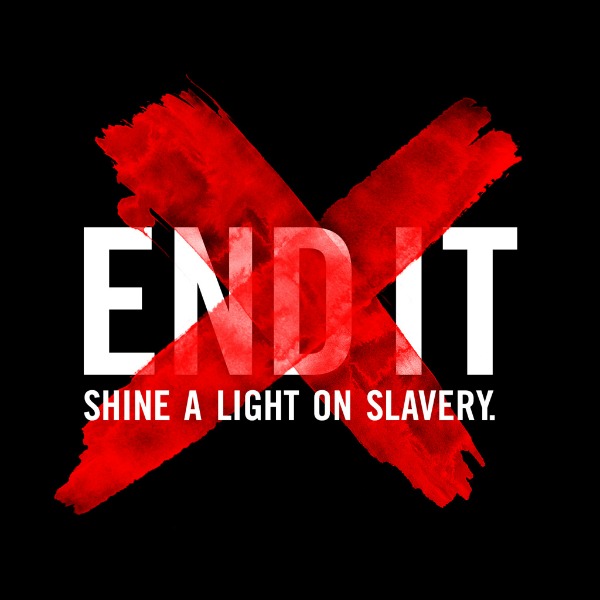
by BJ | Feb 10, 2016 | South Asia

Each February many Shine a Light on Slavery. They will be donning a red X on their hand, taking a selfie showing their red X, posting it on their social media pages and tagging it #enditmovement, to let everyone know that slavery still exists and they won’t be a part of it!
Why? Because they want to be a part of something larger than themselves and they want to make a difference in the world! We want slavery to end!
END IT is a great organization and many influential people are building their teams to help raise money to make others aware. Their Coalition Partners are working to bring AWARENESS, PREVENTION, RESCUE, and RESTORATION.
Did you know?
Estimates say 21-36 million people are enslaved worldwide!
Slavery: being forced to work without pay, under the threat of violence, and being unable to walk away.
Slavery is a $160 billion industry
78% of slavery victims are in labor slavery
22% of slavery victims are in sex slavery
55% of slavery victims are women and girls
45% of slavery victims are men and boys
26% of slavery victims are children under the age of 18
Slavery wears many faces: debt bondage, bonded labor, organ harvesting, domestic slaves, sex slaves, child labor
freetheslaves.net
India has the largest number of people in slavery – 14 million!
A couple of years ago Senator Bob Corker enlisted Peyton Manning, Todd Helton and his Chief of Staff (and friend of ours) Todd Womack.
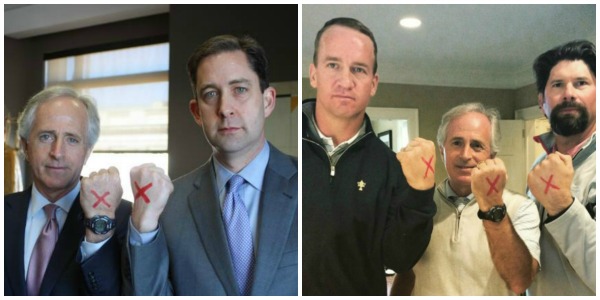
As a matter of fact in 2015 Senator Bob Corker announced a bold, bipartisan legislation to create a focused, sustained effort to eliminate sexual and labor slavery worldwide, the End Slavery Initiative. (You will want to click on this link and share it) He isn’t simply putting a red X on his hand and posting selfies, he’s taking action!
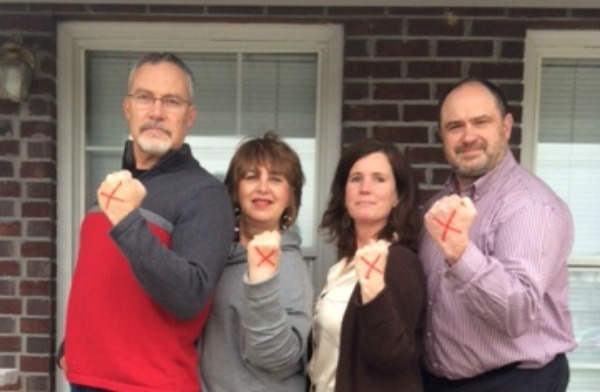
Hope and Help International is also taking action! We are on the ground in South Asia working to prevent slavery of all kinds. Don’t miss future posts where I will highlight some of the ways we are participating in this global movement to abolish slavery.
So, you’re sporting a red X on your hand, you have posted your selfie making your friends and the world aware of slavery and the need to abolish it. Now what are you going to do?
Good intentions don’t change things. Be intentional, take action!
Join the fight by helping us change lives and bring hope to those in India, by helping those who can’t help themselves! For more information hopeandhelpinternational.org
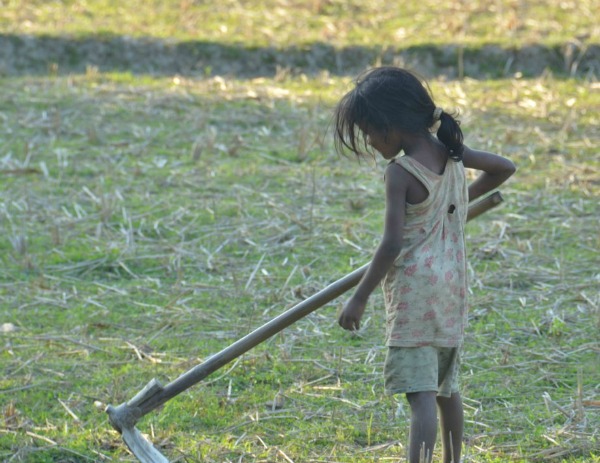
by BJ | Feb 10, 2016 | South Asia

Our team was driving in the state of Assam to check on a bridging school when this little girl digging a hole in a rice paddy captured their attention. She was one in a group of other children.
When they stopped to see her, an older man came out of the house on the property. He seemed friendly enough and not upset that we stopped but the leader of the team was worried about her after they left. Unfortunately she was too far away to attend the bridging school of our pastors attending our Timothy Leadership Institute (TLI) in that area.
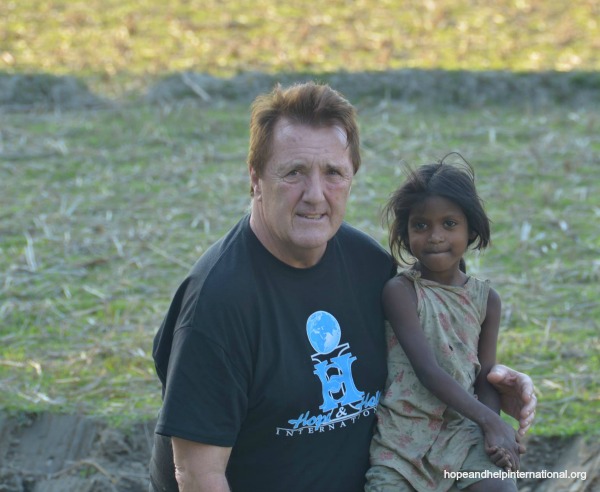
One Tuesday during a trip to South Asia we attended church and then I walked through the small village where tea garden workers lived. We saw women washing clothes at the village well and sweeping the dirt in front of their huts, children were playing and men were milling around talking.
At church I learned the reason they met on Tuesday was that it was their day off from work at the tea garden. The workers spent 10-12 hours/day picking tea leaves and making $1.50/day and usually both the husband and wife worked. Many children “help” their parents and receive no pay at all. If a worker was sick they lost a day’s wages but if they were sick on Sunday they were docked three days pay, so they all met on Tuesday in order to not lose wages.
It wasn’t until later I found out many of the children were not just “helping” their parents, but were forced to work picking tea leaves as well. Unfortunately, the tea gardens are not the only place where you find children working very long days in grueling jobs.
Sadly, India has the largest number of child laborers in the world!
It’s estimated that millions of children, mostly 5-14 years old (although some are as young as three) in India live as modern-day slaves. It is hard to pin point exactly how many children are working because many aren’t officially registered at birth and of course the owners keep the existence of child slaves a secret. They work in the fields, in factories, brothels and private households — often without pay and usually with no real chance of escaping.
Unfortunately poverty, death of a parent(s), lack of education, are all factors in the child labor phenomenon. The majority of the children are sold for as little as 80 rupees ($1.33) by a relative. Or their own families, with promises that they will be treated well, hire them out. When traffickers hand the youngsters over to an employer, they earn a commission of up to 1,000 rupees, or nearly $12 per child. Often times these children are taken to another part of India never to be seen by their parents again.
They are NOT for Sale!
The conditions in which the children work are unregulated and they are often made to work without food and very low wages.
Aid organizations estimate that three-quarters of all domestic servants in India are children, and 90 percent of those are girls.
Physical, sexual and emotional abuse of child domestic workers is not uncommon. Often, children are placed by their families in these homes because they can’t afford to care for them and/or they need the extra income.
Although both child labor and child trafficking are illegal, police rarely intervene and the courts seldom convict child traffickers and slaveholders.
Unfortunately, the Indian government is unwilling to completely ban child labor.
Hope and Help International has boots (well flip flops) on the ground in South Asia and are taking action to prevent child slavery by
- building bridging schools which are located in the rural villages and give children an opportunity to receive a good education as well as at least one balanced meal a day (and sometimes two), vitamins and most importantly hear the Gospel. By attending these schools these children are less likely to be abducted by traffickers because they are known. Children who are left unattended by parents or are on the fringe of society are more likely to be lured away or stolen.
- building and/or supporting orphanages to house and care for abandoned and orphaned children. These also provide a safe haven for children.
- training national pastors to be effective ministers of the gospel of Jesus Christ. In doing so we empower them to shine the light on the evil of slavery and as a result we have seen them engaged in setting the captives free.
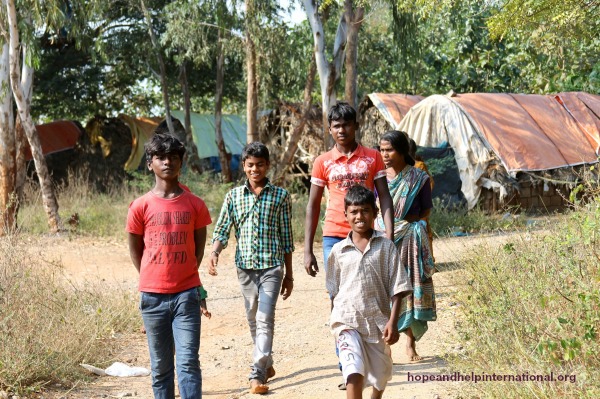
One of our national partners has a bridging school in a slum area near a rock quarry. They are given hope for a better future and protected from traffickers who scour the slums for children to abduct or sometimes buy.
Unfortunately this work is not as easy as it seems. Although the parents would like their children educated many factors are working against the bridging school, with abject poverty playing the leading role. Students often miss school because the parents need them to work and earn more money for the family. For the parents it is the only life they know and their needs are so great, it is hard to convince them to keep their children in school.
The families are in essence enslaved to the owner of the quarry. The children are forced to work because they are cheap labor. Kids break rocks or carry larger stones to the rock piles if they are strong enough. It is hard work, the days are long and the pay is extremely poor.
Now that you are aware that slavery does still exist don’t just give it lip service, take action!!!
Hope and Help International offers many opportunities for you to be a vital part of abolishing slavery. Check out our website to find out more — > hopeandhelpinternational.org.
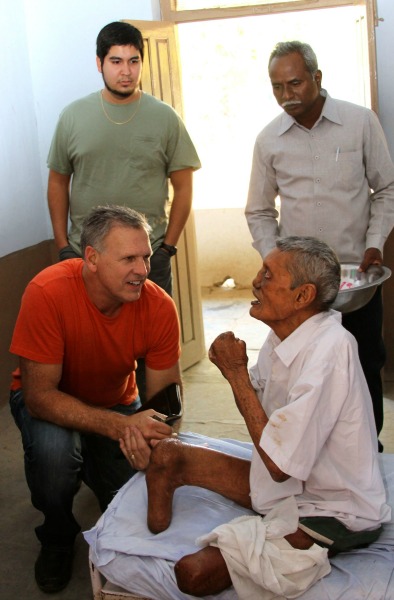
by BJ | Jan 26, 2015 | South Asia

I stood there captivated by the man’s song. The melody was rising from the depths of his heart, spiraling upward to the One who created him. Although he asked if he could sing us a song, it became obvious he was singing for the One who gave him his voice.
Although he will never win a Grammy, nor sing before thousands, world leaders, or kings, he sang as if he would. The song didn’t depend on his circumstances, audience, or talent. He sang because of what he knew about God and what He had done for him.
What makes this man’s song so extraordinary?
This man can’t take care of himself, he is at the mercy of others for every aspect of his life. You see he is blind, and has no fingers or feet. He lives on a small metal cot, in a cement block room, in someone else’s house in the country far away from the villages of those who fear him.
He is a captive who has committed no crime, living in a prison built on the fear of men. Yet he sings the song of liberty!
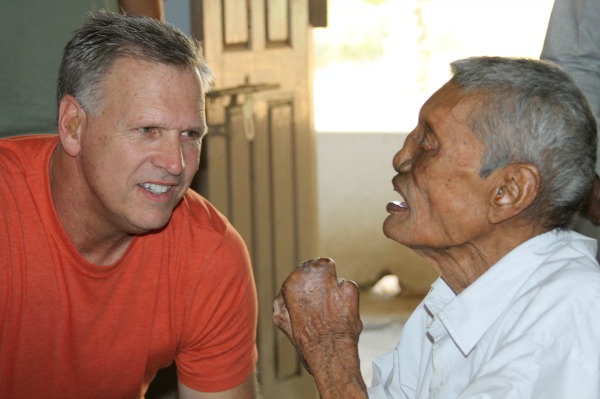
To many this man is considered of no value, unclean, an outcast in his culture doomed to live as a prisoner in a community with others like himself, forbidden the freedom others enjoy. Yet he offers the sacrifice of praise to His Lord.
We introduced this man to our team on our recent trip to India. You see this man is a leper.
Leprosy is a disease that has been known since biblical times. It’s a disease that causes skin sores, nerve damage, and muscle weakness that gets worse over time.
Although leprosy has been all but eradicated, men often act out of fear because of a lack of knowledge.
What causes leprosy?
Leprosy is caused by a bacteria and can be effectively treated with antibiotics. It is not very contagious.
People with long-term leprosy may lose the use of their hands or feet due to repeated injury because they lack feeling in those areas.
Leprosy is common in many countries worldwide, and in temperate, tropical, and subtropical climates such as are found in India. About 100 cases per year are diagnosed in the United States.
Isolating people with this disease in “leper colonies” is not needed.
The impact on our team
Our team stood speechless as the song spilled over them uninterrupted.
Ever so softly the a cappella solo was accompanied with the melody of tears falling over the rims of his sweet wife’s eyes. Tears of joy, not sorrow, as she too offered the sacrifice of praise.
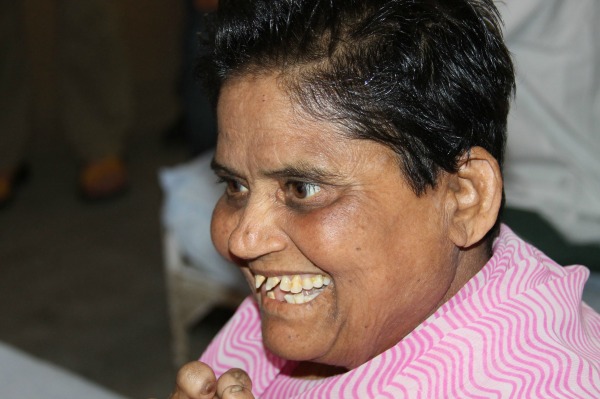
Her smile made Him known to all who were gathered there. His name was exalted by both the song and the tears because God had done great things. The Lord God is their strength and their song!
As the love song continued to fall from their lips and their eyes, our team responded with tears of their own. As the last note drifted upward there was an outpouring of love from team members in the form of hugs and sharing of sweets, which they opened and tenderly fed to those most valued in the Lord’s eyes.

All life is sacred and valuable to God.
But if that weren’t humbling enough something transpired that caught those watching by surprise. As one of our team members opened the wife’s sweet and poured it into her hand, the wife in turn offered it to the team member. She gave out of her poverty to the one who had come to bless her!

Each one was evaluating what they had just witnessed and examining their own hearts in silence as we travelled back to the village.
Praise the Lord in song, for He has done excellent things; Let this be known throughout the earth. Isaiah 12:5
I cried because I had no shoes until I met a man who had no feet.
Persian Proverb
Why are you crying? Do you need a change of perspective?
Read more stories like these or to learn more about our ministry with Hope and Help International @ www.hopeandhelpinternational.org
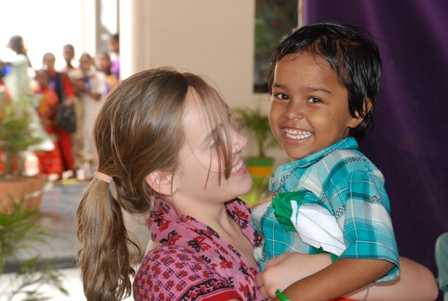
by BJ | Aug 21, 2013 | South Asia
Kavya’s story is a beautiful picture of Gods love and redemption. As an 8 year old, Kavya has no idea yet how much God loves her and what she has been rescued from. But, I totally believe that God has a plan for this fearless, outgoing, lovable little girl. Kavya captures the hearts of all she comes in contact with. In fact her story begins with a heart that fell in love at first sight.
In 2009 Stephanie came with a team to India to do Kids Camp with children from the Veda School, when she fell deeply in love with a 4 year old named Kavya. Stephanie told her mother all about this cute little boy in the turquoise plaid shirt and shorts with a cute short hair cut. He seemed to have picked her out for his very own too, he stuck to her during the entire camp like glue!
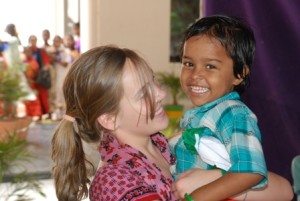
About halfway through camp Stephanie mentioned the little boy to Prem, one of the national partners. “What is his name?” Prem inquired. Kavya! “Kavya is a girl’s name Stephanie.” “No, this Kavya is a boy!” She replied adamantly. He had someone take her and check her out. The verdict came back, “Yes, Kavya was definitely a girl!” Stephanie was not yet convinced and questioned Dolly if Kavya was a girls name, to which she replied that it was. Dolly had her checked and once again it was determined that Kavya was definitely a little girl!
Stephanie and her mother bought her a dress, which she wore every day of camp. (it was her only dress). They were inseparable as though joined at the hip. Stephanie would lovingly call her Kavyavyavia and she would flash a smile as big as Texas and call Stephanie Akka (big sister). (more…)

by BJ | Aug 17, 2013 | South Asia

Heading to India 2013!
So I’ll stand with arms high and heart abandoned
In awe of the One who gave it all
So I’ll stand, my soul Lord to You surrendered
All I am is Yours
The Stand- Hillsong
As I sang these words of worship the Sunday before we left for India they served as a reminder to me that morning, why I go to India. Before I get into my story let me share a little bit about India.
(more…)
















